
A resource by the Millet Revival Project to help you learn about these ancient grains and make them a regular addition to your pantry.
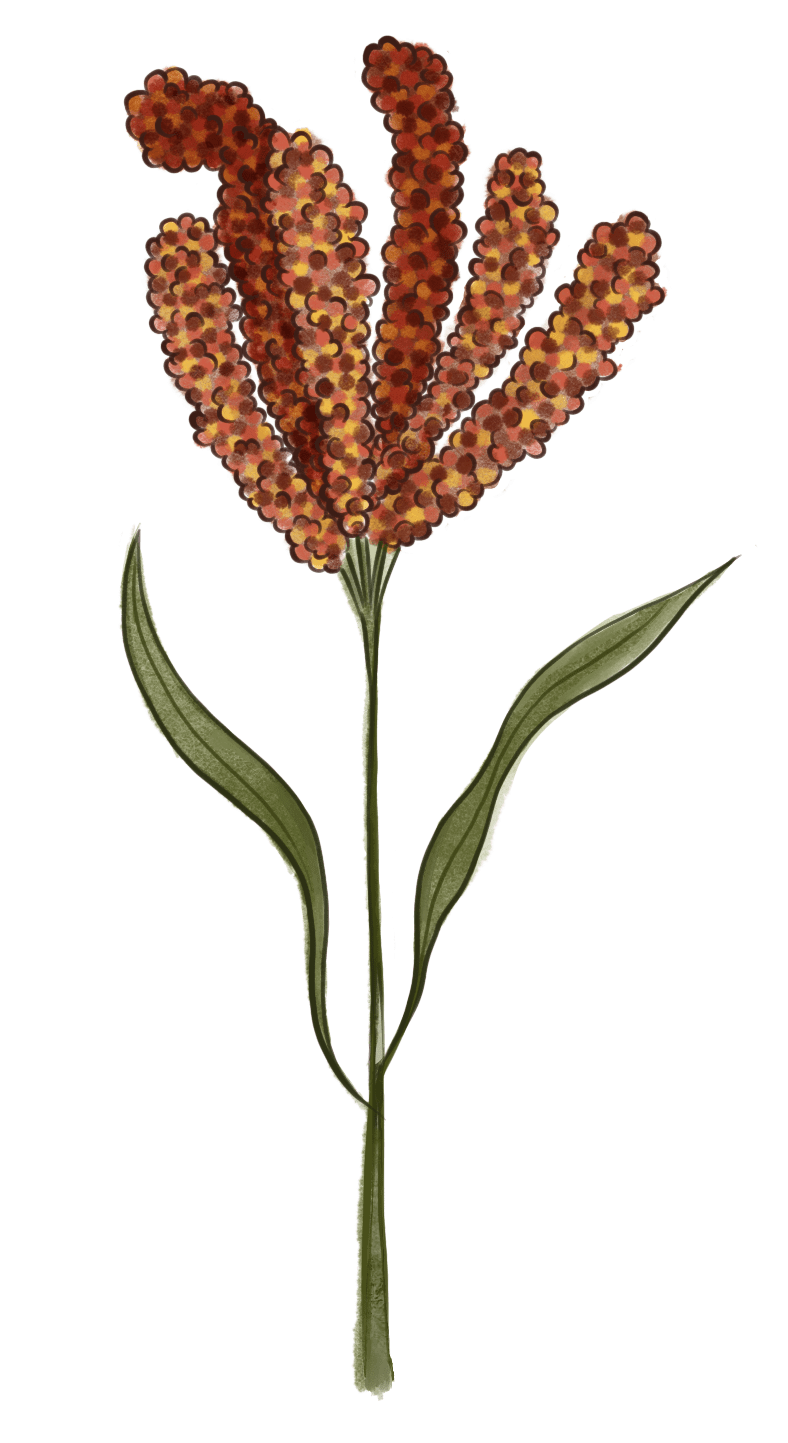
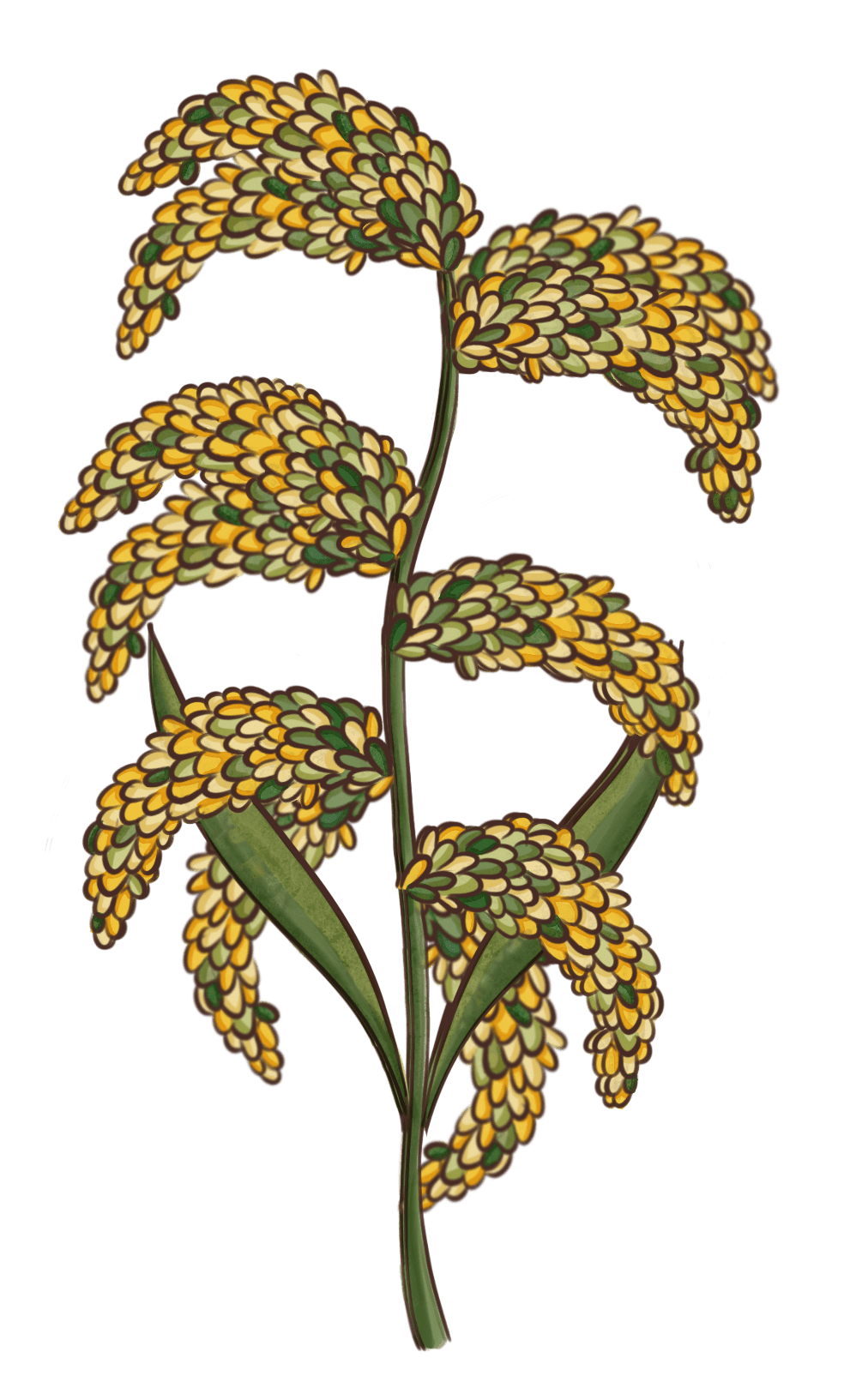
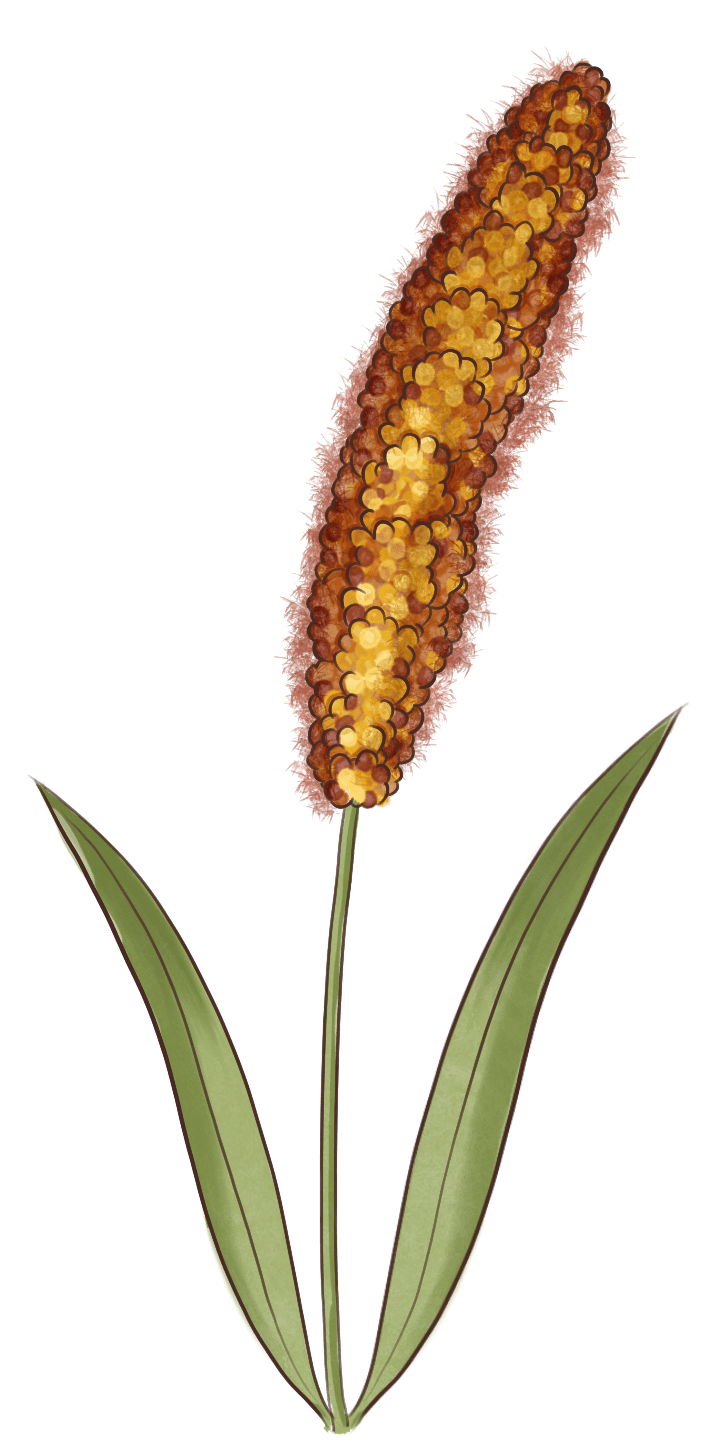
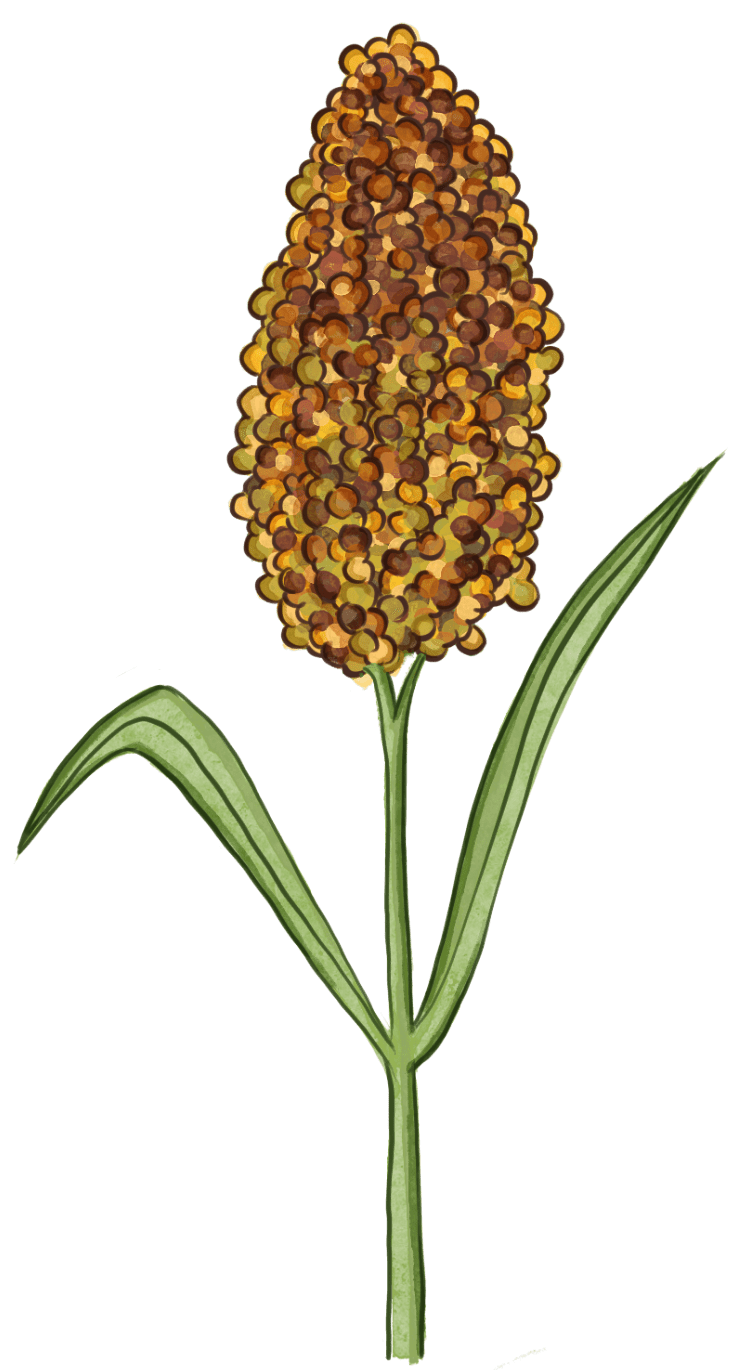
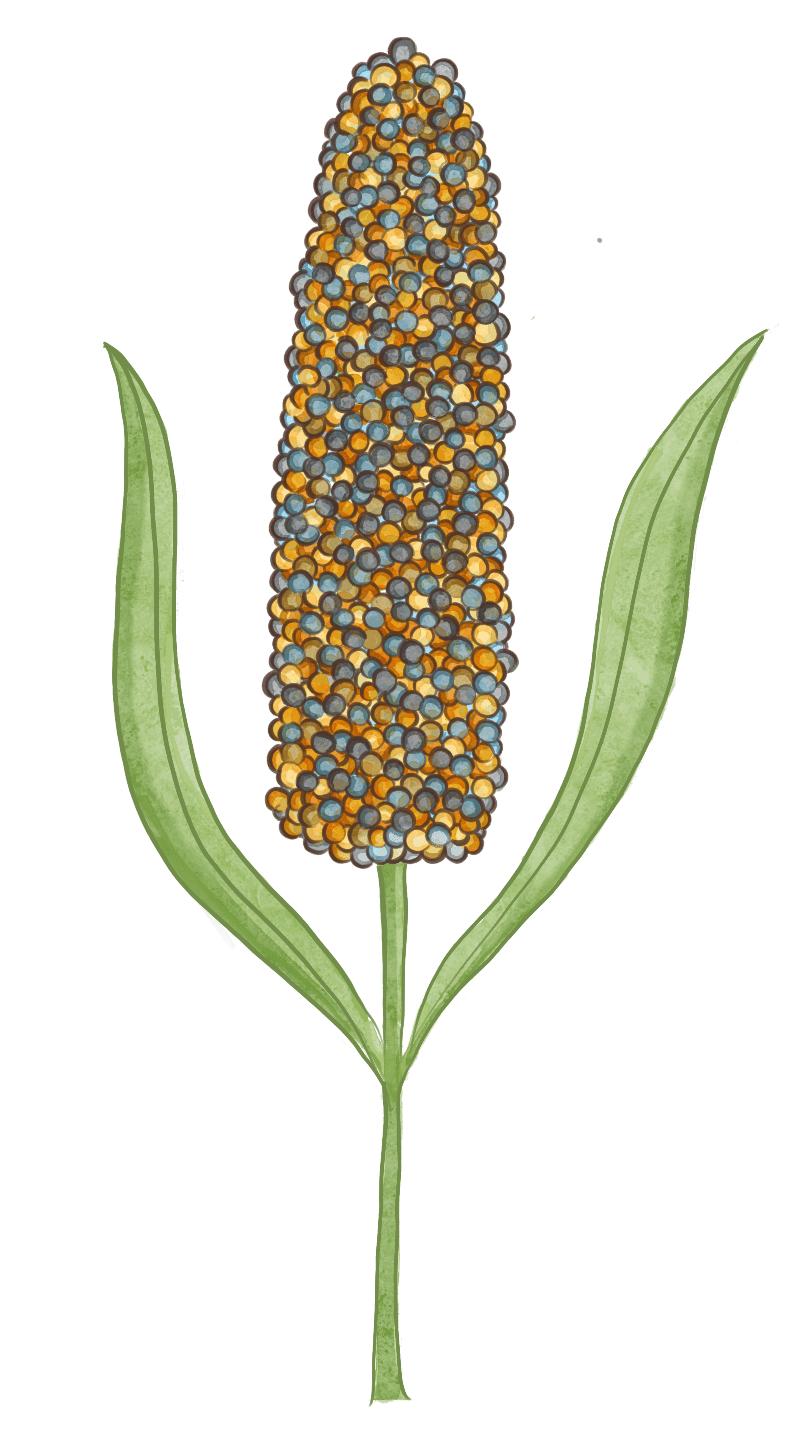
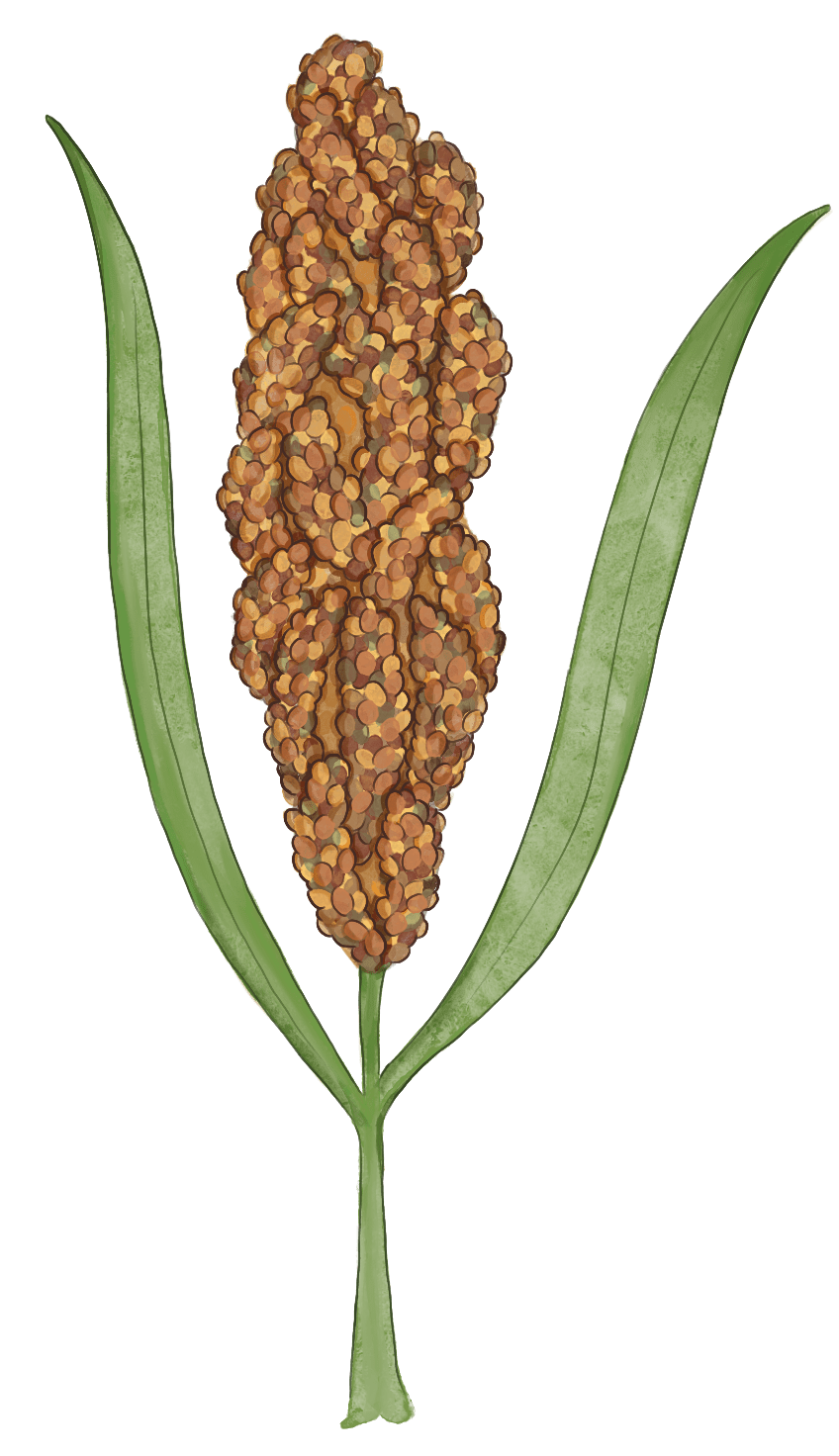
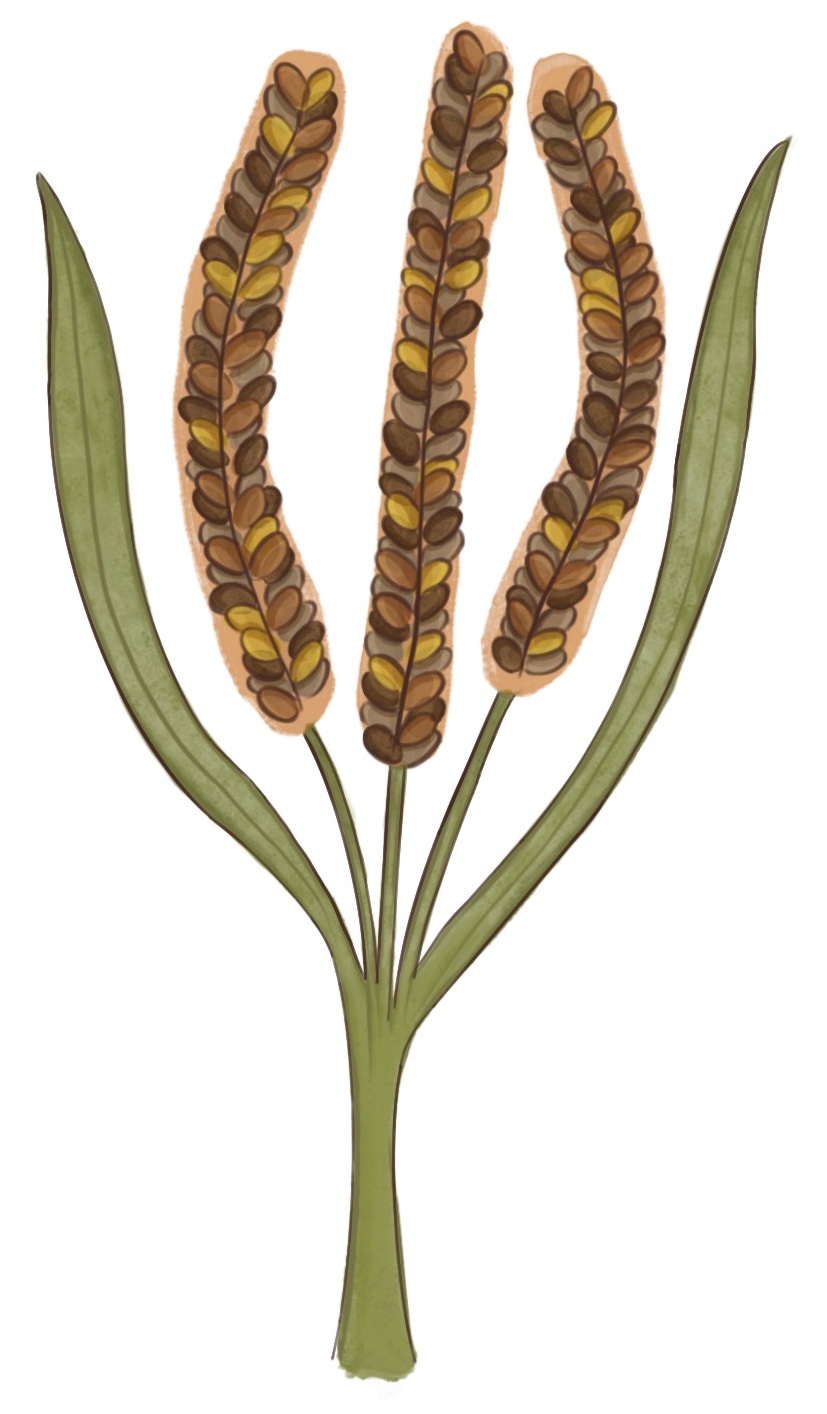
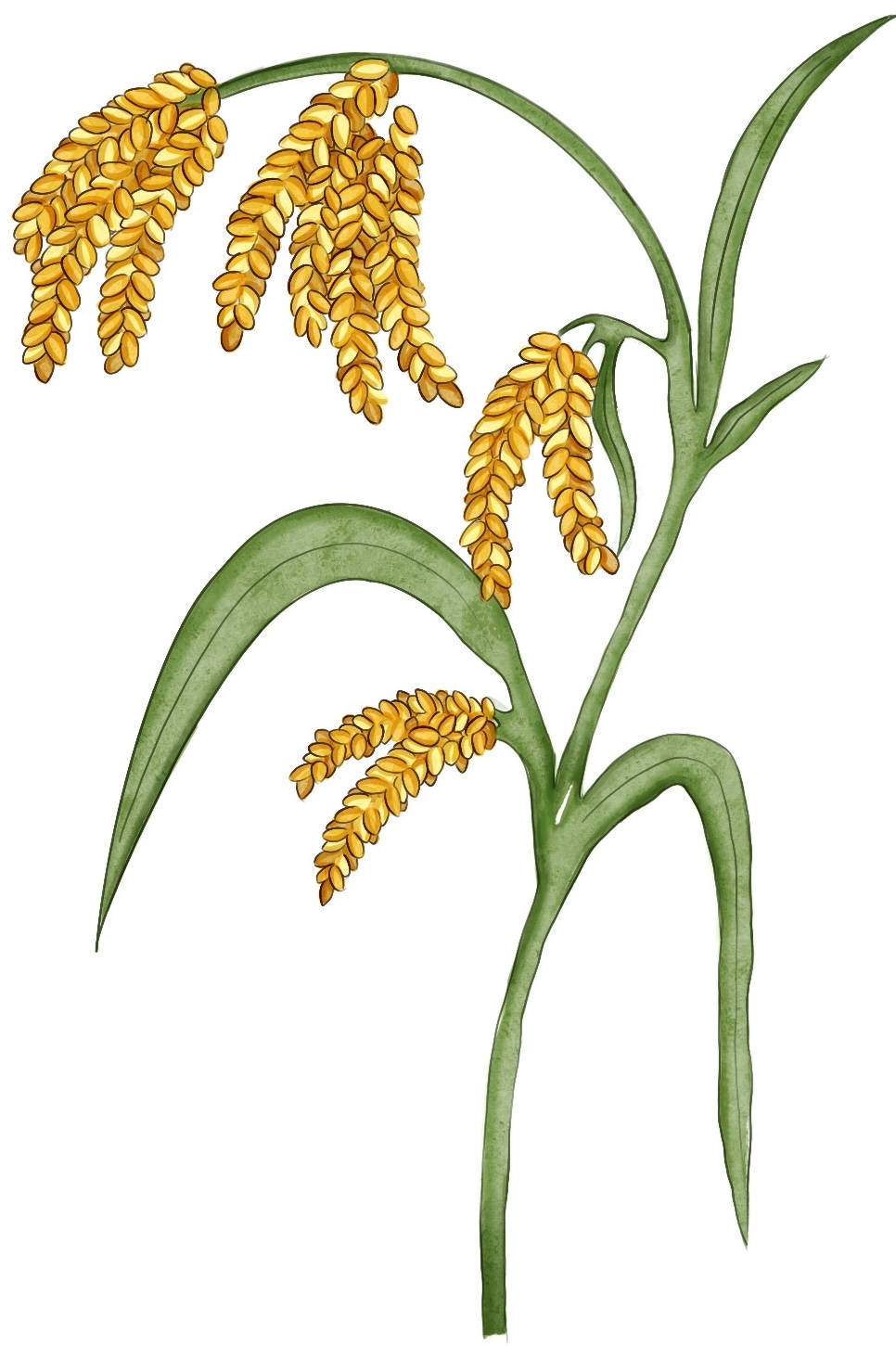
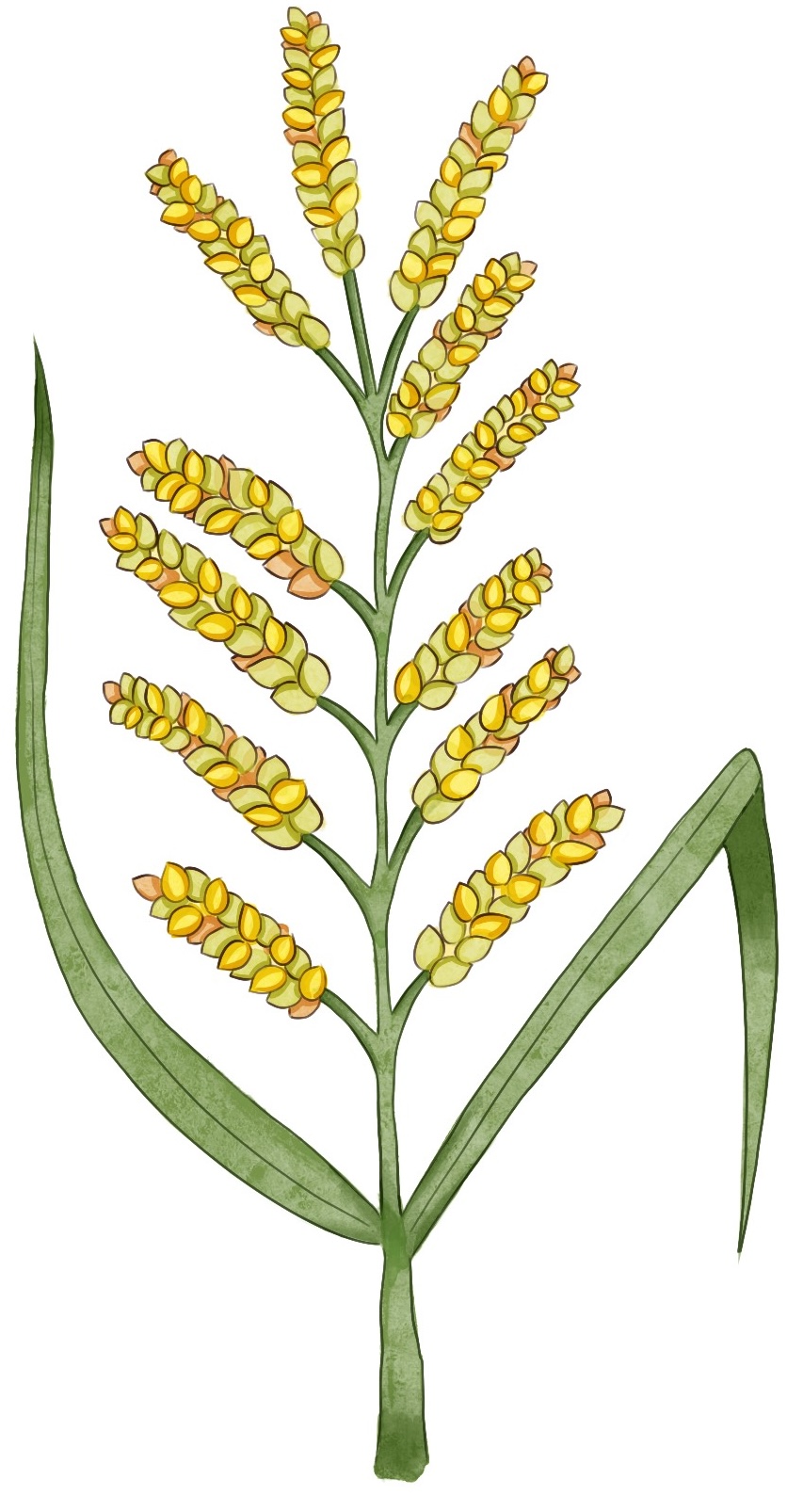
Millets have been a staple for countless communities across the Indian subcontinent, each region offering its own cherished recipes and stories. These hardy grains, which require minimal water and grow in various climates, hold the promise of agriculture that supports both people and the planet.
An ancient cereal group, millets are made up of small-seeded perennial grasses. They are cultivated and consumed across the world due to their nutritional benefits.
As you explore this resource, we invite you to see millets as more than an ingredient—as a step towards resilient, sustainable food choices for us all.
Millets are known by different names across different regions—and languages—in India, such as Mota Anaj in Hindi, Jaanar in Bengali, Bharad Dhanya in Marathi, Siridhanyalu in Tamil.
Order: Poale
Family: Poaceae (Gramineae or true grasses)
Sub-families: Panicoideae or Chloridoideae
Do you wish to incorporate millets into your daily kitchen regimen? Or just need to brush up on the culinary or nutritional aspects of the millet varieties we use? The following guide will help you.
A section on cooking techniques will provide preliminary information on cooking with a specific millet. This is supplemented with details on dishes in which the grain—or its flour—can be used, and the ingredients with which it pairs best.
While it is true that every millet is a world unto itself, with specific tastes and nutritional values, there are a few things to keep in mind while cooking millets that could be helpful regardless of the choice of grain.
Washing and soaking the grains in water properly is absolutely necessary as it increases the availability of the nutrients in the millets. The smaller grains should be soaked for at least 2-3 hours; larger grains preferably overnight. Cooked grains should be allowed to cool down to let the starch in the grain crystallise and form resistant starch. The resistant starch has prebiotic properties which further reduce the glycemic index of the grains.
Inexhaustive yet comprehensive nutritional profiles indicate both the macronutrient and micronutrient content of each millet.
If you think the long processing durations might intimidate you from introducing millets to your pantries, plates, and palates, we urge you to give them a chance. Seemingly daunting at first, these earthy, hearty grains are incredibly easy to assimilate into a variety of dishes with just a little practice.
Finger Millet
Scientific name:
Eleusine coracana
Also known as:
Ragi (Kannada)
Ragulu (Telugu)
Mandua (Hindi, Bengali)
Kelvararagu (Tamil)
Moothari (Malayalam)
Mandia (Odia)
Nachni (Marathi)
Nagli/Bavto (Gujarati)
Mandhuka/Mandhal (Punjabi)
Ragi has an inherently earthy flavour. It pairs well with chutneys and pickles in savoury recipes and with honey, cinnamon, and powdered jaggery in sweet preparations. However, you should avoid adding fresh fruits to ragi malt that is prepared with milk.
For Grains
1. Whole grains need to be washed and soaked overnight before use.
2. Use the soaked grain in porridges and khichdi; it can also be ground to make batter for pancakes. A fermented mixture of ground ragi and lentils makes for great dosas.
For Flour
1. Ground ragi can be used more readily to make roti, bread, tea cakes, or granola.
2. You can make ragi malt by adding the flour to water or milk, mixing thoroughly to remove any clumps, and then cooking it over high heat (while whisking the mixture continuously) with a sweetener of your choice.
3. It can also be used to make ragi balls by adding more flour to the malt mix and cooking it over low heat till it’s dry and cooked all the way through. Serve these with soups and gravies.
The major finger millet-growing states in India are Karnataka, Tamil Nadu, and Maharashtra. Minor growing states include Uttarakhand, Andhra Pradesh, Odisha, and Jharkhand. Karnataka accounts for 64.8 percent of ragi produced in India. Tamil Nadu and Maharashtra are the next major producers.
Macros (per 100 g)
-
- Energy: 320 Kcal
- Protein: 7.2 g
- Carbohydrates: 66.8 g
- Fat: 1.92 g
- Dietary Fibre: 11.2 g
Micros (per 100 g)
-
- Iron: 4.6 mg
- Phosphorus: 210 mg
- Zinc: 2.5 mg
- Calcium: 364 mg
Since it lends excellently to producing malt, ragi makes for an ideal weaning alternative. However, due to the grain’s high oxalic acid content, those suffering from kidney stones should consume it in moderation.
Being considerably drought- and pest-resistant, finger millet can be grown in arid regions. It is one of the highest-yielding millets in India.
Finger millet can be traced back to Africa, with some limited studies suggesting western Tanzania or the Ethiopian highlands as sites of its origin.
Proso Millet
Scientific name:
Panicum miliaceum
Also known as:
Barre (Hindi)
Cheno (Gujarati)
Pani Varagu (Tamil)
Baragu (Kannada)
Varigulu / Varagalu (Telugu)
Cheena (Bengali)
Cheena (Punjabi)
Panivaragu (Malayalam)
Proso millet has a mildly nutty flavour, and some studies suggest it can lower risk of cardiovascular disease. The grains work well in dessert preparations pairing well with milk and nuts. For savoury dishes, proso millet pairs very well with vegetables for making dishes like upma or fried ‘rice’.
For Grains
Proso millet grains should be soaked for around 3 to 4 hours to soften; they take 20 minutes to boil. The grains can be used in a variety of dishes, such as kheer, tabbouleh, and even brewed to produce beer.
For Flour
Proso millet flour can be baked into flatbreads, made into idlis and samosas, or used for barfis.
Proso millet is grown in Madhya Pradesh, Uttar Pradesh, Bihar, Tamil Nadu, Maharashtra, Andhra Pradesh, and Karnataka.
Macros (per 100 g)
-
- Energy: 341 Kcal
- Protein: 12.5 g
- Carbohydrates: 70.4 g
- Fat: 1.1 g
Micros (per 100 g)
-
- Calcium: 14 mg
- Phosphorus: 206 mg
- Magnesium: 153 mg
- Zinc: 1.4 mg
Part of the small millet group, proso millet domestication dates back to 8000 BC, where it was first grown in China. Proso millet thrives in dry climates and survives at high altitudes. It has been cultivated widely across the world, in regions such as India, Africa, Eastern Europe, and the Middle East.
Proso millet is a popular choice for crop rotation owing to its relatively low-demand cultivation—it has a short growth period, is both drought- and pesticide-resistant, and isn’t as susceptible to disease as other crops.
Studies show that proso millets could be beneficial in reducing the risk of cardiovascular disease by increasing HDL or “good” cholesterol and improving insulin response. The millet is rich in B vitamins, including B6 and folic acid, which are derived solely from one’s diet.
Foxtail Millet
Scientific name:
Setaria italica
Also known as:
Kangni/Kakum (Hindi)
Navane (Kannada)
Tenai (Tamil)
Korra, Korralu (Telugu)
Thina (Malayalam)
Kang (Marathi, Gujarati)
Kaon (Bengali)
Kangu/Kang/Gondli (Odia)
Kangni (Punjabi)
Instead of water, use vegetable broth to cook the millet in savoury dishes to enhance their flavour.
To make the preparation creamier, use coconut milk instead of water while cooking.
Add a spoonful of coconut oil, butter or olive oil to the millet before sealing the rice cooker/ instant pot/ pressure cooker.
For Grains
1. Soak the grains in water for at least 6 hours. Cook them in a pan with 2.5 cups of water for every cup of grains, alternating between having the lid on and off for the first 5-6 minutes. Then cook covered, on low heat, for about 15 minutes.
For Flour
1. Foxtail millet flour can be roasted and mixed with boiling water to form a dough for idiyappam.
2. When roasted, the flour can be used in sweet preparations like pancakes with sugar or jaggery syrup.
Major areas of cultivation are Tamil Nadu, Andhra Pradesh, Karnataka, Telangana, and Rajasthan.
Macros (per 100 g)
-
- Energy: 331 Kcal
- Protein: 12.3 g
- Carbohydrate: 60.1 g
- Fat: 4.3 g
Micros (per 100 g)
-
- Calcium: 31 mg
- Phosphorus: 188 mg
- Zinc: 2.4 mg
- Iron: 2.8 mg
The health benefits of foxtail millet include low-glycemic and hypolipidemic effects. However, the dietary fibre in the seeds reduced the availability of micro-nutrients like calcium, magnesium, zinc, and iron. Therefore these millets should be consumed in moderation, or treated by soaking or fermentation to reduce the risk of any side-effects.
It is extensively cultivated in the semi-arid and arid regions of Africa, the Americas, and Asia because of a good yield with minimal agricultural inputs. Moreover, it adapts well to different biotic and abiotic stressors such as salinity, drought, and fungal diseases.
It is a member of the Paniceae tribe (sub-family Panicoideae of the Poaceae) and came from green millet domestication in northern China about 8,000 years ago.
Sorghum Millet
Scientific name:
Sorghum bicolor
Also known as:
Jowar (Hindi)
Jola (Kannada)
Cholam (Tamil, Malayalam)
Jonna (Telugu)
Jwari (Marathi)
Juar (Gujarati, Bengali)
Janha/Khedjana/Gangei/Janjarla (Odia)
Sorghum millet pairs well with whole wheat flour and is particularly useful for gluten-free baking. It can be used to make flatbreads like injera, muffins, pasta, and desserts. Xanthan gum, flaxseed powder or psyllium husk are good binders for jowar.
For Grains
1. Unsoaked grains can be roasted, puffed, and spiced to make a quick and delicious snack.
2. Most recipes will require soaking the grains overnight. Alternatively, you can use a pressure cooker and cook them for 20 minutes (or five whistles). If you’re using a stovetop, add two cups of water for every cup of sorghum in a pan and cook it for one hour.
3. Cooked whole grains can be used to make upma, salads, or khichdi.
For Flour
1. Sorghum flour is a gluten-free option and can be used to make bhakri, cheela, and pancakes.
2. Adding 2 tablespoons of flaxseed powder to one cup of finely milled jowar can slow down the absorption of the flour, contributing to a lower spike in blood glucose levels.
The major growing areas include Maharashtra, Karnataka, Tamil Nadu, Rajasthan, and Andhra Pradesh. It is also grown in minor quantities in Uttar Pradesh, Madhya Pradesh, Telangana, Gujarat, and Haryana.
Macros (per 100 g)
-
- Energy: 334 Kcal
- Protein: 9.9 g
- Carbohydrates: 67.7 g
- Fats: 1.73 g
- Fibre: 10.2 g
Micros (per 100 g)
-
- Iron: 3.9 mg
- Phosphorus: 274 mg
- Zinc: 1.9 mg
- Calcium: 27.6 mg
The phytochemicals in sorghum help combat cardiovascular diseases and inflammation, and can assist in controlling blood glucose levels. Being gluten-free, it is a good alternative for those suffering from celiac disease.
Sorghum is classified as a C4 crop, which means that it is remarkably energy-efficient. Like most millets, it can withstand droughts and other extenuating environmental conditions. The stems of certain varieties of sorghum are sweet and succulent, making it a potent choice of raw material for bioethanol production.
The origin of sorghum is generally believed to be around north-east Africa; its domestication dates back to about 5,000-8,000 years ago. India became the secondary centre of origin and domestication of sorghum about 4,500 years ago.
Pearl Millet
Scientific name:
Pennisetum glaucum
Also known as:
Bajra (Hindi, Punjabi, Bengali)
Sajjai (Kannada)
Kamboo (Tamil, Malayalam)
Gathia/Katenga/Katreng (Odia)
Sajjalu (Telugu)
Bajri (Marathi, Gujarati)
Pearl millet has a nutty taste and pairs well in savoury as well as sweet preparations. Consume with fat (white butter or ghee) for better digestion.
For Grains:
1. The grains must be soaked for at least 12 hours before cooking to reduce the cooking time.
2. Cook the grains in a pressure cooker with three cups of water for every cup of grain, letting it cook for 15-20 minutes after a whistle.
For Flour:
1. Ground pearl millet flour is used to make flatbreads, bhakris, cheela, and baked goods.
2. Mix the flour with warm water and knead until you get a smooth dough. Dust the kneaded dough with some flour to make it more pliant to work with.
Rajasthan, Maharashtra, Gujarat, Uttar Pradesh, and Haryana contribute to nearly 95 percent of the total cultivated area for pearl millet in India.
Macros
-
- Energy 347 Kcal
- Protein: 10.9 grams
- Carbohydrate: 61.8 g
- Fat: 5.43 g
- Fibre: 11.5 g
Micros
-
- Calcium: 27.4 mg
- Phosphorus: 289 mg
- Zinc: 2.7 mg
- Iron: 6.4 mg
Pearl millet can help fight against non-communicable diseases. However, due to the presence of goitrogenic compounds (that limit the absorption of iodine and negatively affect thyroid activity), those with goitre or a history of thyroid-related concerns should avoid it.
It is the most drought- and heat-resistant cereal among all the grains suitable for cultivation in high temperatures and semi-arid conditions. It is also the sixth major cereal cultivated in India.
Pearl millet is a descendant of the wild West African grass and was domesticated over 4,000 years ago in the West African Savannah, eventually spreading to East Africa and India.
Kodo Millet
Scientific name:
Paspalum scrobiculatum
Also known as:
Kodon (Hindi)
Kodra (Marathi, Gujarati, Punjabi)
Kodua (Odia)
Kodo (Bengali)
Varagu (Tamil)
Arikelu/Arika (Telugu)
Harka (Kannada)
Kodo millet is an ideal substitute for rice in dishes such as pongal, khichdi, pulao, and biryani. It can also work well as a grain base for salads.
For Grains
1. Wash and rinse the grains in water at least 3-4 times until the water runs clean. It is advisable to soak kodo millet for around 30 minutes to reduce phytate levels—this makes them easier to digest, and improves the availability of nutrients.
2. While cooking, the water to kodo millet ratio is 2:1. Kodo millet grains should be cooked in a heavy-bottomed pan or a pressure cooker, to prevent them from getting burnt. They can get dry and lumpy, however, if not consumed shortly after cooking.
For Flour
1. Kodo millet flour forms a thick dough when mixed with water, which can be used to make dishes such as vadas and pakoras. A dough of a comparatively thinner consistency can be used for rotis and dosas.
Major areas of cultivation include the Deccan Plateau, spanning Madhya Pradesh, Chattisgarh, Maharashtra, Tamil Nadu, and Karnataka.
Macros (per 100 g)
-
- Energy: 331 Kcal
- Protein: 8.9 g
- Carbohydrates: 66.2 g
- Fat: 2.55 g
- Fibre: 6.4 g
Micros (per 100 g)
-
- Calcium: 15.3 mg
- Iron: 2.3 mg
- Phosphorus: 101 mg
- Zinc: 1.6 mg
Indigenous to India, Kodo millet is a member of the small millet family. Grown for nearly 3,000 years the cereal finds mention historical texts such as the Arthashastra.
Kodo millet grows well in humid climates, particularly in the tropics and sub-tropics.
Kodo millet is high in protein and fibre, and low in fat.
Kodo millet is a rich source of B vitamins and essential minerals like calcium, iron, magnesium, and potassium, supporting the nervous system and warding against cardiovascular diseases including diabetes.
Barnyard Millet
Scientific name:
Echinochloa esculenta and Echinochloa frumentacea
Also known as:
Sanwa /Jhangon (Hindi)
Kuthiraivaali (Tamil)
Udalu/Kodisama (Telugu)
Oodalu (Kannada)
Shamula (Bengali)
Khira (Odia)
Sama (Gujarati)
Barnyard millet pairs well with soups and sambar. A popular recipe is for a savoury porridge made with buttermilk called chencha. The millet’s flavour is enhanced when paired with spices, as its own taste does not dominate.
For Grains
Barnyard millets require 16-17 minutes of cooking for 50 grams of grains, or three whistles in a rice cooker. While barnyard millets are lower in phytic acid, they do well with around 2-2.5 hours of soaking. Sometimes, the grains can get too mushy or gloopy, so they need to be cooled and fluffed up before being cooked in other ways.
For Flour
Barnyard millet flour can be made into dosas, pancakes, and even used to partially substitute all-purpose flour for pizza bases or other bread recipes.
While the major area of cultivation is in Uttarakhand, barnyard millet is also grown in Tamil Nadu, Andhra Pradesh, and Karnataka.
Macros (per 100 g)
-
- Energy: 307 Kcal
- Protein: 6.2 g
- Carbohydrates: 65.5 g
- Fat: 2.2 g
Micros (per 100 g)
-
- Calcium: 20 mg
- Iron: 5 mg
- Zinc: 3 mg
- Phosphorus: 280 mg
With its origins in Japan dating back 4,000 years, barnyard millet is grown in temperate climates across Asia—in India, Japan, China, and Korea—with two main species of barnyard millet dominating the fields.
Barnyard millet is dual-purpose grain, cultivated for both food and livestock feed.
Barnyard millet is a good source of dietary fibre, protein, and minerals such as iron and zinc, making them beneficial for digestion and to reduce blood glucose levels. Plus, they are especially helpful for those with digestive issues or at risk of diabetes.
Little Millet
Scientific name:
Panicum sumatrense
Also known as:
Kutki/Shavan (Hindi)
Kangani (Bengali)
Samai (Tamil)
Gajro Kuri (Gujarati)
Samalu (Telugu)
Sava (Marathi)
Saame (Kannada)
Chama (Malayalam)
With its mildly sweet and nutty flavour, little millet can be used in both savoury and sweet preparations.
For Grains
Little millets should be soaked for at least 30 minutes before cooking. Soaking these grains for longer brings out their natural sweetness. Owing to its small grain size, little millet can be made into upma, khichdi, or kheer.
For Flour
Little millet flour can be used in a variety of ways—for making rotis, parathas or cheelas, or as a binding agent for cutlets or even kadhi.
Little millet is grown mainly in Madhya Pradesh, Chattisgarh, and Andhra Pradesh, with some cultivation in Odisha, Gujarat, Maharashtra, and Karnataka.
Macros (per 100 g)
-
- Energy: 346 Kcal
- Protein: 10.1 g
- Carbohydrates: 65.5 g
- Fat: 3.89 g
- Fibre: 7.7 g
Micros (per 100 g)
-
- Calcium: 16.1 mg
- Zinc: 1.8 mg
- Iron: 1.2 mg
- Magnesium: 91 mg
The smallest among the different varieties of millets, little millet is also native to India, despite a limited geographical expanse when it comes to cultivation.
Little millet is unique in its ability to grow at altitudes up to 2,000 metres above sea level. Its resistance to adverse climate conditions—both drought and waterlogging—and a short growth period make it valuable for crop rotation.
Like other small millet varieties, little millet is high in dietary fibre and antioxidants. It is especially beneficial for growing children and aids in digestion as well as managing diabetes.
Brown Top Millet
Scientific name:
Urochloa ramosa
Also known as:
Makra, Muraat (Hindi, Marathi)
Hari Kang (Gujarati)
Palapul/Kulsama (Odia)
Kula Saamai (Tamil)
Korale (Kannada)
Andakorra (Telugu)
Chama Pothaval (Malayalam)
Shyama (Bengali)
Hari Kangni (Punjabi)
Brown top millet has a mild, nutty flavour and works wonderfully in both sweet and savoury dishes. You can add whole or cracked grains to baked goods—this will add crunch and some extra dietary fibre.
For Grains
1. Clean the grains thoroughly under running water and then soak them overnight.
2. Unsoaked grains can be toasted on a medium-high heat until golden brown. Then reduce the heat and let it toast for 5 more minutes. Add water, or a broth of your choice, with some salt and let it come to a boil. Cover the utensil and let it simmer for another 20 minutes. Use it to make porridges or pilafs.
3. Combine around 3 cups of cooked grains with one tablespoon of milled flaxseed to make a dough for millet balls, or mix it with herbs and vegetables to make filling salads.
4. It can also be popped—like popcorn—by adding it to a heated skillet.
For Flour
1. Soaked, dried, toasted, and ground flour can be used to make flatbreads.
2. Combine it with ground lentils to make a batter for gluten-free pancakes, dosas, and idlis.
Brown top millet has limited cultivation in Karnataka and Andhra Pradesh. However, it grows as a weed across India.
Macros (per 100 g)
-
- Energy: 338 Kcal
- Protein: 8.98 g
Carbohydrates: 71.32 g - Fat: 1.89 g
- Fibre: 8.5 g
Micros (per 100 g)
-
- Calcium: 28 mg
- Iron: 7.72 mg
- Phosphorus: 276 mg
- Potassium: 60 mg
- Magnesium: 94.5 mg
When consumed regularly, brown top millets—thanks to their high fibre content—can help prevent and manage gastrointestinal concerns such as constipation and diverticulosis, as well as dyslipidemia (high levels of lipids in the blood). The magnesium in these millets aids in improving the efficiency of insulin and glucose receptors by supporting carbohydrate-digesting enzymes, making it an excellent choice of cereal for diabetic or pre-diabetic individuals.
It can grow in less fertile, sandy loam soil, and is an excellent, inexpensive crop to grow as it matures in 60-80 days and is resilient to most pests and diseases. Although it is largely grown as a food crop, it can be used as fodder for cattle.
Brown top millet was domesticated in south India during 3000 BC and spread outwards to other parts of the country. It was a staple cereal in the prehistoric Deccan peninsula, making it a heritage crop. Over the years, its cultivation was displaced by higher-yielding millets such as sorghum and foxtail millet. However, it is still grown as a minor crop in southern India.
